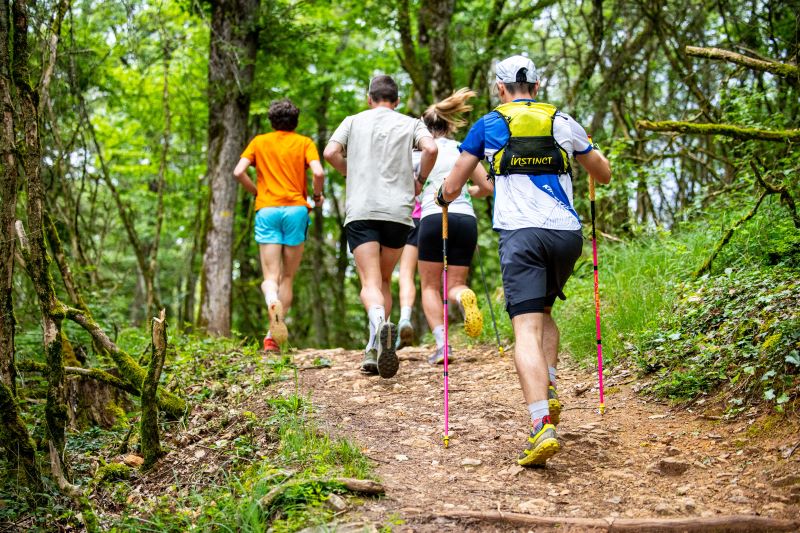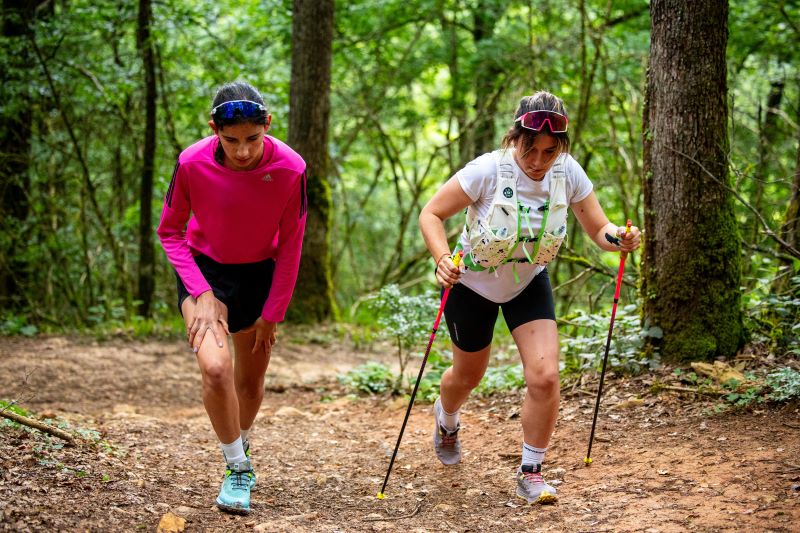
Many former road runners (but not only them!) forbid themselves to walk during trail running training or races. But what does science say? To walk or to run, that is the question! Uphill, on flat terrain, downhill, hold on to your sneakers, walk or run, we’re going to unravel all of this together in this article!
Contents
The trail runner dilemma: walk or run?
When we think of trail running, we often imagine ourselves running at full speed in nature. But the reality is that trail running is a clever mix of running and walking. And even the ultra-terrestrial Kilian Jornet says so! So, how do you know when to walk or run in trail running?
The slope, your best friend… or not!
In trail running, the slope is often the decisive factor. The steeper and more difficult it is, the slower your speed will decrease until you’re almost at a standstill. At that point, between walking or running, it’s best to opt for a brisk walk! The advantages:
- A lower heart rate
- Better oxygenation
- Less energy expenditure
- Better management
Indeed, when you run, you expend energy both horizontally to move forward and create speed, and vertically to create that little suspension momentum where you have no ground support. Whereas when you walk, you only need to exert a horizontal effort to move forward and create speed.
Once you know yourself well enough, this is one of the best ways to improve uphill. In short, by walking on steep inclines, you will preserve your strength for the rest of the course. Clever, isn’t it?

Listening to your body, your best GPS
With experience, you will learn to feel when it’s time to switch to walking mode. But in the meantime, you can rely on your heart rate. Set a high zone on your heart rate monitor and as soon as you reach it, switch to walking until the summit or a point where the slope decreases. It’s an excellent way to manage your effort and save energy, especially if you’re a beginner or tackling long distances.
Or during an ultra trail or a long flat trail like L’Ultra Marin, for example, ideally to go faster, you should run all the time because the terrain allows it. But in terms of energy cost and your muscle capabilities, it can get complex over the kilometers. Indeed, to make sure you finish your race and manage your energy as you go, you can implement strategies by alternating running and walking: for example, 10 minutes of running for 1 minute of walking.
To help you, you can use poles, especially on uphills. You will save your thigh muscles in the climbs, allowing you to maintain a good pace on flatter or even downhill sections! Even if it requires some technique, for mountain trails in particular, poles will be a real advantage for walking portions.
How to incorporate walking and running into your trail training
Now that you know that walking and running are complementary, how do you incorporate them into your trail running training?
Natural interval training
Trail running is perfect for naturally alternating between walking and running. On steep climbs, don’t hesitate to manage your effort by walking at a good pace. Use your arms by placing your hands on your thighs and pushing on them to be even more effective! Indeed, walking fast and for a long time requires training!
On flat terrain and descents, increase your stride and maintain speed according to your level. It’s an excellent way to work on your endurance and power. These outings are called hike-and-run sessions.
Active walking, your recovery ally
On days when you’re not running, why not do a session of active walking? It’s ideal for recovering while continuing to work on your endurance. Plus, it will help you burn some extra calories!
Thus, you can go for a short walk, without too much distance or positive elevation gain. The intensity of your outing should be low and should promote muscle recovery. If you’re tired, it’s an excellent way to clear your mind and still get some exercise!

The challenge of 10,000 steps per day
You’ve surely heard of the 10,000 steps per day myth. Good news: recent studies suggest that 7,000 daily steps are enough to significantly reduce the risk of mortality or to lose weight. It’s a more achievable goal that will keep you active even on days without training.
Whether it’s for your trail running training, walking or running, the important thing is to find the right balance. Listen to your body, vary your training, and most importantly, have fun! After all, trail running is above all an adventure in nature. So, ready to lace up your sneakers, whether to walk or run?